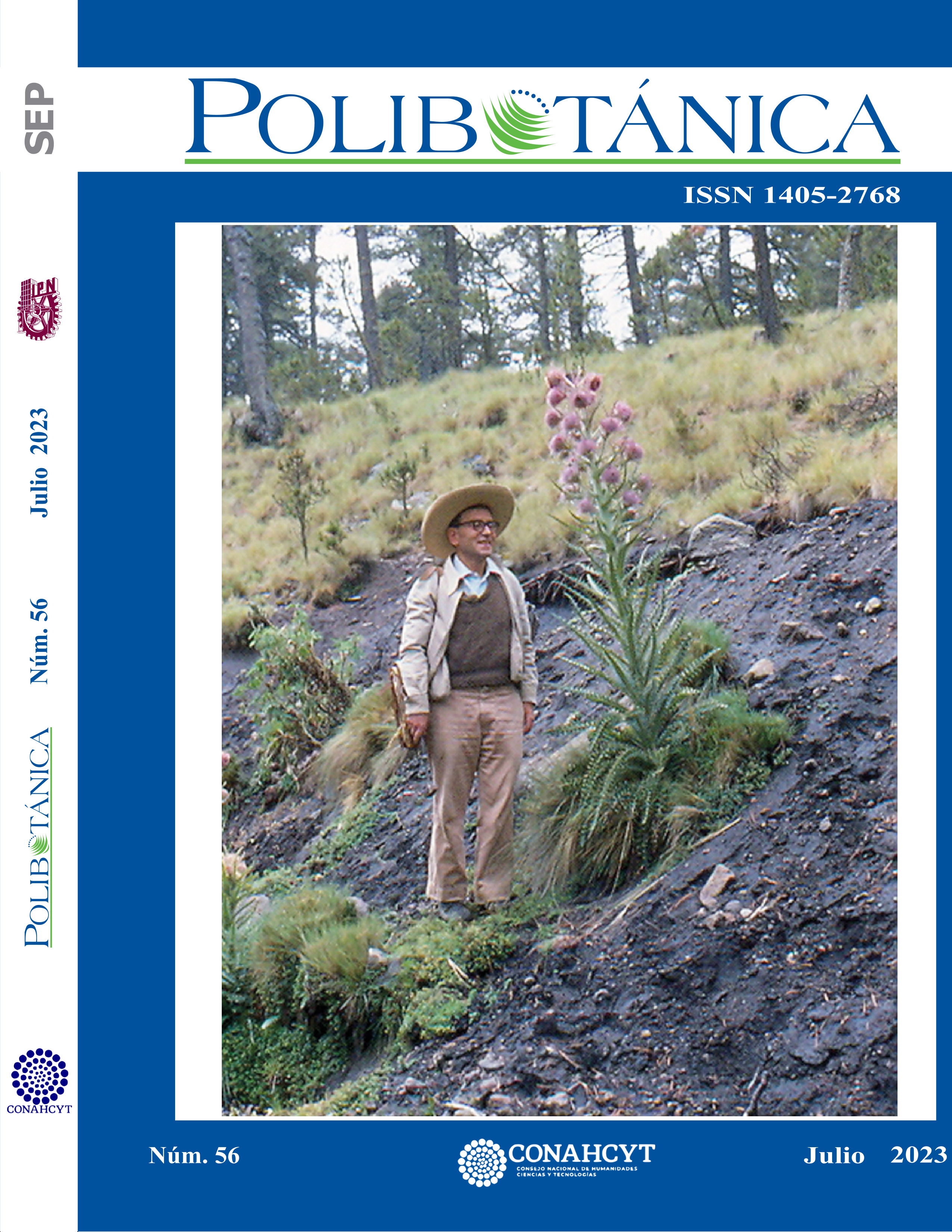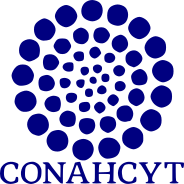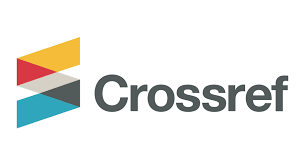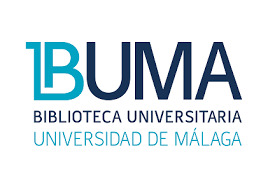Ethnobotany of Medicinal Plants Used in the Chol Ethnic Group from Tila, Chiapas, Mexico.
DOI:
https://doi.org/10.18387/polibotanica.56.13Palavras-chave:
Chol culture, Etnopharmacology, Healer, Herbalism, Tradicional medicineResumo
Herbalism is one of the basic pillars of traditional medicine in Mexico; however, the documentation of its knowledge is scarced. The use of medicinal plants by the Chol ethnic group from Mexico has not been documented. In this work, we analyzed the traditional medicine information provided by three Chol healers from Tila, Chiapas, Mexico. The research was carried out in Tila, Chiapas, Mexico between April and June of the year 2018. Semi-structured interviews were applied to Chol healers about medicinal plants from in this region, collecting specimens of plants, classified and deposited in a recognised herbarium. The databases PubMed/Medline, Web of Science, Scopus, Wiley Online Library, ScienceDirect, and Google Scholar were the basis to explore the medicinal use of such plants.
We reported 36 plants with medicinal uses, 26 of them are considered endemic, while 10 are considered introduced. The Lamiaceae family is predominant with five specimens; most of the reported plants act on the gastrointestinal system or as an anti-inflammatory factor. The most common route of administration is oral. The knowledge of traditional Mexican herbalism has a fundamental role in the treatment of various diseases in the Chol communities. The dissemination and registration are essential for the protection and preservation of this knowledge culture.
Referências
Afroz, M., Akter, S., Ahmed, A., Rouf, R., Shilpi, J. A., Tiralongo, E., … Uddin, S. J. (2020). Ethnobotany and Antimicrobial Peptides From Plants of the Solanaceae Family: An Update and Future Prospects. Frontiers in Pharmacology, 11, 565, 1-15. doi:10.3389/fphar.2020.00565
Ahmed, A. F., Shi, M., Liu, C., & Kang, W. (2019). Comparative analysis of antioxidant activities of essential oils and extracts of fennel (Foeniculum vulgare Mill.) seeds from Egypt and China. Food Science and Human Wellness, 8(1), 67-72.). DOI: https://doi.org/10.1016/j.fshw.2019.03.004.
Alaba, C. S. M., & Chichioco-Hernandez, C. L. (2014). 15–Lipoxygenase inhibition of Commelina benghalensis, Tradescantia fluminensis, Tradescantia zebrina. Asian Pacific journal of tropical biomedicine, 4(3), 184-188. DOI: 10.1016/S2221-1691(14)60229-X
Barrera, C. A. C., Gómez, D. C., & Castiblanco, F. A. (2016). Importancia medicinal del género Croton (Euphorbiaceae). Revista Cubana de Plantas Medicinales, 21(2), 234-247
Barthlott, W., Lauer, W., & Placke, A. (1996). Global Distribution of Species Diversity in Vascular Plants: Towards a World Map of Phytodiversity (Globale Verteilung der Artenvielfalt Höherer Pflanzen: Vorarbeiten zu einer Weltkarte der Phytodiversität). Erdkunde, 50(4), 317–327. http://www.jstor.org/stable/25646853
Bolaji, A. O., Adeniran, O. I., Adedayo, A., & Akinpelu, B. A. (2019). Evaluation of chemical composition, anti-inflammatory, antioxidant and cytotoxic potential of leaf and root extracts of euphorbia graminae. Tropical Journal of Natural Product Research, 3(6), 201-209. DOI: 10.26538/tjnpr/v3i6.4
Bomma, M., Okafor, F., Mentreddy, S. R., Nyochembeng, L., Rangari, V. K., & Khan, S. (2020). The chemical composition, characterization, and combination effect of Ocimum campechianum leaf essential oils and bio-produced silver nanoparticles against Listeria monocytogenes and Escherichia coli. International Journal of Current Engineering and Technology, 10(4), 518-526. DOI: https://doi.org/10.14741/ijcet/v.10.4.4
Buyun, L., Tkachenko, H., Kurhaluk, N., Góralczyk, A., Tomin, V., & Osadowski, Z. (2019). Screening for antimicrobial activity of nine ethanolic extracts obtained from leaves of Begonia plant A possible alternative in the treatment of infections caused by Citrobacter freundii. Agrobiodiversity for Improving Nutrition, Health and Life Quality, (3). Retrieved from https://agrobiodiversity.uniag.sk/scientificpapers/article/view/279.
Caamal-Herrera, I. O., Carrillo-Cocom, L. M., Escalante-Réndiz, D. Y., Aráiz-Hernández, D., & Azamar-Barrios, J. A. (2018). Antimicrobial and antiproliferative activity of essential oil, aqueous and ethanolic extracts of Ocimum micranthum Willd leaves. BMC complementary and alternative medicine, 18(1), 1-9. DOI: 10.1186/s12906-018-2122-z.
Cadena-Zamudio, Jorge David, Nicasio-Torres, María del Pilar, Guerrero-Analco, José Antonio, & Ibarra-Laclette, Enrique. (2019). Ethnopharmacological studies of Cecropia obtusifolia (Urticaceae) and its importance in the treatment of type 2 diabetes mellitus: A mini-review. Acta botánica mexicana, (126), e1361. DOI: https://doi.org/10.21829/abm126.2019.1361.
Can-Sulu, C. (2015). Ocimum campechianum (Lamiaceae): su uso en la medicina tradicional. Herb CICY7: 31-34.
Donadu, Peralta-Ruiz, Y., Usai, D., Maggio, F., Molina-Hernandez, J. B., Rizzo, D., Bussu, F., Rubino, S., Zanetti, S., Paparella, A., & Chaves-Lopez, C. (2021). Colombian Essential Oil of Ruta graveolens against Nosocomial Antifungal Resistant Candida Strains. Journal of Fungi, 7(5), 383. DOI: https://doi.org/10.3390/jof7050383)
Dunn, C. (2017). Biological and cultural diversity in the context of botanic garden conservation strategies. Plant Diversity,39(6): 396-401. DOI: 10.1016/j.pld.2017.10.003
Facey P. C., Pascoe K. O., Porter R. B. and Jones A. D. (1999) Investigation of plants used in Jamaican folk medicine for anti-bacterial activity, Journal of Pharmacy and Pharmacology, vol. 51, no. 12, pp. 1455–1460, 1999. DOI: https://doi.org/10.1211/0022357991777119
Ghazanfarpour, M., Mohammadzadeh, F., Shokrollahi, P., Khadivzadeh, T., Najaf Najafi, M., Hajirezaee, H., & Afiat, M. (2018). Effect of Foeniculum vulgare (fennel) on symptoms of depression and anxiety in postmenopausal women: a double-blind randomised controlled trial. Journal of Obstetrics and Gynaecology, 38(1), 121-126. DOI:10.1080/01443615.2017.1342229.
Gogineni, V., Nael, M. A., León, F., Núñez, M. J., & Cutler, S. J. (2019). Computationally aided stereochemical assignment of undescribed bisabolenes from Calea urticifolia. Phytochemistry, 157, 145-150. DOI: 10.1016/j.phytochem.2018.10.022.
Gómez, O. C., & Luiz, J. H. H. (2018). Endophytic fungi isolated from medicinal plants: future prospects of bioactive natural products from Tabebuia/Handroanthus endophytes. Applied microbiology and biotechnology, 102(21), 9105-9119. DOI: 10.1007/s00253-018-9344-3.
Grace, G., Aloys, O., & Chaka, B. (2020). Characterization of Bio-active Compounds Essential for Blood Coagulation in the Crude Extracts of Tradescantia zebrina, Tagetes minuta and Codiaeum variegatum Leaves. DOI: 10.9734/ajacr/2020/v6i330164.
Grzeszczuk, M., Salachna, P., & Meller, E. (2018). Changes in photosynthetic pigments, total phenolic content, and antioxidant activity of Salvia coccinea Buc’hoz Ex Etl. induced by exogenous salicylic acid and soil salinity. Molecules, 23(6), 1296. DOI: https://doi.org/10.3390/molecules23061296
Hasan, H. A.; Raauf, A. M. R.; Razik, B. M. A.; Hassan, A. R. (2012). Chemical composition and antimicrobial activity of the crude extracts isolated from Zingiber officinale by different solvents. Pharmaceut Anal Acta, New Haven, v. 3, n. 9, p. 1-5. DOI: 10.4172/2153-2435.1000184.
Hesham Abdelhafez, Omnia, Refaat Fahim, John, Ramadan Abdelmohsen, Usama, & Yehia Desoukey, Samar. (2021). Headspace Volatiles of the Leaves and Flowers of Malvaviscus arboreus Cav. (Malvaceae). Journal of the Mexican Chemical Society, 65(1), 141-148. Epub 04 de junio de 2021. DOI: https://doi.org/10.29356/jmcs.v65i1.1431
IIS-UNAM. Instituto de Investigaciones Sociales- Universidad Autónoma de México. (2012). Choles. Repositorio Universitario Digital. http://ru.iis.sociales.unam.mx/jspui/handle/IIS/774.
Ikpefan, E. O., Enwa F. O. & Emebrado, O. (2020). Pure, N. J. Euphorbia graminea Jacq.(Euphorbiaceae): The antimicrobial assessment of the extract and fractions of the leaves 33:2. DOI: http://dx.doi.org/10.48198/NJPAS/20.B15.
INECOL. Instituto de Ecología, A. C. Lascurain M., Rivera-Núñez T., González C. A., & Medina Garcia M. (2022). ¿Qué significa biocultural?. https://www.inecol.mx/inecol/index.php/es/transparencia-inecol/17-ciencia-hoy/1570-que-significa-biocultural. (accessed on 24 March 2022)
Jimenez-Gonzalez, F. J., Vélez-Gómez, J. M., Melchor-Moncada, J. J., Veloza, L. A., & Sepúlveda-Arias, J. C. (2018). Antioxidant, anti-inflammatory, and antiproliferative activity of extracts obtained from Tabebuia Rosea (Bertol.) DC. Pharmacognosy Magazine, 14(55), 25.
Lateef, A., Folarin, B. I., Oladejo, S. M., Akinola, P. O., Beukes, L. S., & Gueguim-Kana, E. B. (2018). Characterization, antimicrobial, antioxidant, and anticoagulant activities of silver nanoparticles synthesized from Petiveria alliacea L. leaf extract. Preparative Biochemistry and Biotechnology, 1–7. DOI: doi:10.1080/10826068.2018.1479864
Li-Wei X, Jang C, Huan-Yang Q, Yan-Ping S (2011). Chemical constituents from Tagetes erecta flowers. Chemistry of Natural Compounds, 47(2), 281–283. DOI:10.1007/s10600-011-9905-5
Martínez, I. F. (2011). Revisión taxonómica de la sección Membranaceae del género Salvia en México (Doctoral dissertation, Universidad Nacional Autónoma de México).
Maurya, S., & Sangwan, N. S. (2020). Profiling of essential oil constituents in Ocimum Species. Proceedings of the National Academy of Sciences, India Section B: Biological Sciences, 90(3), 577-583. DOI:10.1007/s40011-019-01123-8.
Mijangos-Ramos, I. F., Zapata-Estrella, H. E., Ruiz-Vargas, J. A., Escalante-Erosa, F., Gómez-Ojeda, N., García-Sosa, K., ... & Peña-Rodríguez, L. M. (2018). Bioactive dicaffeoylquinic acid derivatives from the root extract of Calea urticifolia. Revista Brasileira de Farmacognosia, 28, 339-343. DOI: https://doi.org/10.1016/j.bjp.2018.01.010.
Najafian, Y., Hamedi, S. S., Kaboli Farshchi, M., & Feyzabadi, Z. (2018). Plantago major in Traditional Persian Medicine and modern phytotherapy: a narrative review. Electronic Physician, 10(2), 6390–6399. DOI: 10.19082/6390.
Nascimento, C. C. H. C., Vasconcelos, S. D., Camacho, A. C. L. F., Nascimento, S. F., Oliveira, J. F. F., Nogueira, R. I., ... & Diré, G. F. (2016). A literature review on the medicinal properties and toxicological profile of Costus spicatus plant. RJLBPCS 2(2) Page No.56. DOI: 10.26479/2016.0202.07
Ogidi, O. I., Esie, N. G., & Dike, O. G. (2019). Phytochemical, Proximate and Mineral compositions of Bryophyllum pinnatum (Never die) Medicinal plant. Journal of Pharmacognosy and Phytochemistry, 8(1), 629-635.
Olazarán-Santibañez, F., Rivera, G., Vanoye-Eligio, V., Mora-Olivo, A., Aguirre-Guzmán, G., Ramírez-Cabrera, M., & Arredondo-Espinoza, E. (2021). Antioxidant and antiproliferative activity of the ethanolic extract of equisetum myriochaetum and molecular docking of its main metabolites (Apigenin, Kaempferol, and Quercetin) on β-Tubulin. Molecules, 26(2), 443. DOI: https://doi.org/10.3390/molecules26020443.
Osorio, E., Arango, G. J., Jiménez, N., Alzate, F., Ruiz, G., Gutiérrez, D., ... & Robledo, S. (2007). Antiprotozoal and cytotoxic activities in vitro of Colombian Annonaceae. Journal of ethnopharmacology, 111(3), 630-635. DOI: 10.1016/j.jep.2007.01.015
Palumbo, A., Casanova, L. M., Corrêa, M. F. P., Da Costa, N. M., Nasciutti, L. E., & Costa, S. S. (2019). Potential therapeutic effects of underground parts of Kalanchoe gastonis-bonnieri on benign prostatic hyperplasia. Evidence-Based Complementary and Alternative Medicine, vol. 2019, Article ID 6340757, 10 pages, 2019. DOI: https://doi.org/10.1155/2019/6340757.
Pavić, V., Flačer, D., Jakovljević, M., Molnar, M., & Jokić, S. (2019). Assessment of Total Phenolic Content, In Vitro Antioxidant and Antibacterial Activity of Ruta graveolens L. Extracts Obtained by Choline Chloride Based Natural Deep Eutectic Solvents. Plants, 8(3), 69. DOI: doi:10.3390/plants8030069
Revilla-Monsalve MC, Andrade-Cetto A, Palomino-Garibay MA, Wiedenfeld H, Islas-Andrade S. (2007). Hypoglycemic effect of Cecropia obtusifolia Bertol aqueous extracts on type 2 diabetic patients. J Ethnopharmacol. 22;111(3):636-40. doi: 10.1016/j.jep.2007.01.014.
Ria Mariani, Elin Yulinah Sukandar, Asep Gana Suganda (2014). Antimicrobial activity from indonesian urticaceae. International Journal of Pharmacy and Pharmaceutical Sciences, 2014, Vol 6, Issue 4, 191-193.
Saleem, H., Usman, A., Mahomoodally, M. F., & Ahemad, N. (2020). Bougainvillea glabra (Choisy): A comprehensive review on botany, traditional uses, phytochemistry, pharmacology and toxicity. Journal of Ethnopharmacology, 113356. DOI: doi:10.1016/j.jep.2020.113356.
SEMARNAT. Secretaría de Medio Ambiente y Recursos Naturales. (2021). Plantas Medicinales en México. https://www.gob.mx/semarnat/articulos/plantas-medicinales-de-mexico?idiom=es. (accessed on 11 March 2022).
Singh, Y., Gupta, A., & Kannojia, P. (2020). Tagetes erecta (Marigold)-a review on its phytochemical and medicinal properties. Current Medical and Drug Research, 4(1), 1-6.
Siregar, H. M., Purwantoro, R. S., PRAPTIWI, P., & Agusta, A. (2018). Antibacterial potency of simple fractions of ethyl acetate extract of Begonia baliensis. Nusantara Bioscience, 10(3), 159-163. DOI: https://doi.org/10.13057/nusbiosci/n100305.
Tacchini, M., Echeverria Guevara, M. P., Grandini, A., Maresca, I., Radice, M., Angiolella, L., & Guerrini, A. (2020). Ocimum campechianum mill. from Amazonian Ecuador: Chemical Composition and biological activities of extracts and their main constituents (eugenol and rosmarinic acid). Molecules, 26(1), 84. DOI: https://doi.org/10.3390/molecules26010084.
Toledo, V. M., & Barrera-Bassols, N. 2008. La memoria biocultural: la importancia ecológica de las sabidurías tradicionales. Barcelona: Icaria editorial. pp.61-64 ISBN: 978-84-9888-001-4.
Tomaszewska-Sowa, M. (2020). In vitro clonal propagation and efficient acclimatization with use of hydrogel of intensively sweet medicinal plant Lippia dulcis Trev. Herba Polonica, 66(4). DOI: https://doi.org/10.2478/hepo-2020-0019.
Uchenna, E. F., Adaeze, O. A., & Steve, A. C. (2015). Phytochemical and Antimicrobial Properties of the Aqueous Ethanolic Extract of Saccharum officinarum (Sugarcane) Bark. Journal of Agricultural Science, 7(10). DOI: http://dx.doi.org/10.5539/jas.v7n10p291.
Umasa, E., & Castro, O. (1990). Chemical constituents of Verbena littoralis. International Journal of Crude Drug Research, 28(3), 175-176. DOI: https://doi.org/10.3109/13880209009082807.
Unger, C., Popescu, R., Giessrigl, B., Rarova, L., Herbacek, I., Seelinger, M., ... & Krupitza, G. (2012). An apolar extract of Critonia morifolia inhibits c-Myc, cyclin D1, Cdc25A, Cdc25B, Cdc25C and Akt and induces apoptosis. International journal of oncology, 40(6), 2131-2139. DOI: https://doi.org/10.3892/ijo.2012.1412.
Vestena, A., Piton, Y., de Loretto Bordignon, S. A., Garcia, S., Arbo, M. D., Zuanazzi, J. A., & von Poser, G. (2019). Hepatoprotective activity of Verbena litoralis, Verbena montevidensis and their main iridoid, brasoside. Journal of ethnopharmacology, 239, 111906. DOI: 10.1016/j.jep.2019.111906.
WHO. World Health Organization. (2013). WHO traditional medicine strategy: 2014-2023. World Health Organization. https://apps.who.int/iris/handle/10665/92455
Wright, C. I., Van-Buren, L., Kroner, C. I., & Koning, M. M. G. (2007). Herbal medicines as diuretics: a review of the scientific evidence. Journal of ethnopharmacology, 114(1), 1-31. DOI: 10.1016/j.jep.2007.07.023.
Zahran, E. M., Abdelmohsen, U. R., Khalil, H. E., Desoukey, S. Y., Fouad, M. A., & Kamel, M. S. (2020). Diversity, phytochemical and medicinal potential of the genus Ocimum L.(Lamiaceae). Phytochemistry Reviews, 19(4), 907-953. https://doi.org/10.1007/s11101-020-09690-9(0123456789.
Zavala-Ocampo, L. M., Aguirre-Hernández, E., López-Camacho, P. Y., Cárdenas-Vázquez, R., Dorazco-González, A. and Basurto-Islas, G. (2022). Acetylcholinesterase Inhibition and Antioxidant Activity Properties of Petiveria Alliacea L. Doi: https://doi.org/10.1016/j.jep.2022.115239
Zubair, M. S., Anam, S., Khumaidi, A., Susanto, Y., Hidayat, M., & Ridhay, A. (2016). Molecular docking approach to identify potential anticancer compounds from Begonia (Begonia sp). In AIP Conference Proceedings (Vol. 1755, No. 1, p. 080005). Doi: https://doi.org/10.1063/1.4958513
Downloads
Publicado
Edição
Seção
Licença

Polibotánica por Departamento de Botánica de la Escuela Nacional de Ciencias Biológicas del Instituto Politécnico Nacional se distribuye bajo una Licencia Creative Commons Atribución-NoComercial-CompartirIgual 4.0 Internacional.




















